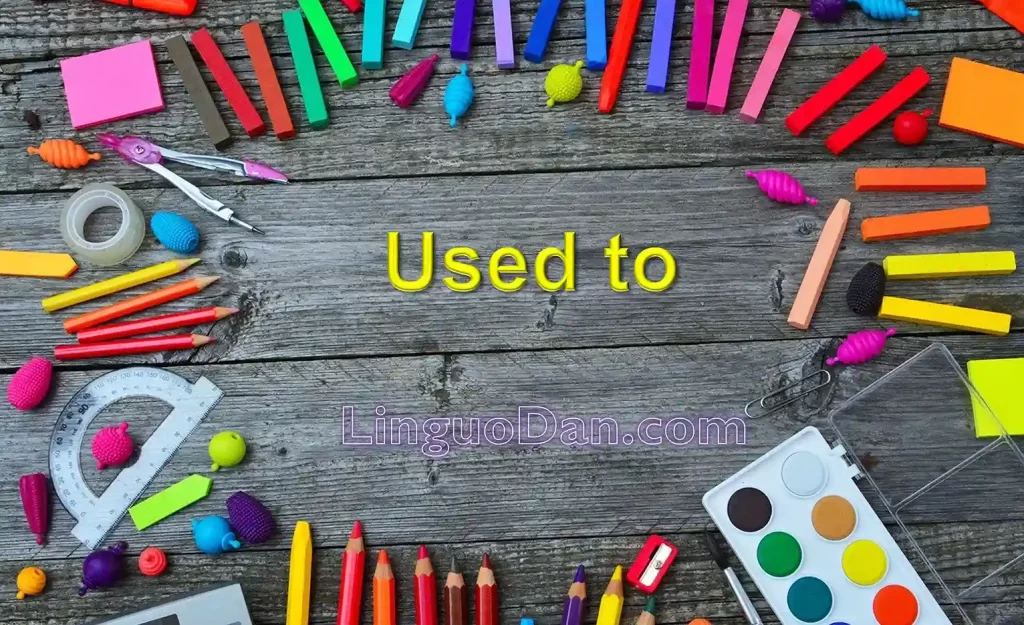Difference between “used to”, “would” and “use to”

Rules of use of “used to”, differences from “would” and “use to”
One of the aspects of learning English is the use of different grammatical constructions. One of them is the construction “used to“, which is used to express past habits and changes in the past. In this article, we will consider the rules for using this construction and give several examples to better understand its meaning. Also consider the differences between “used to” and “would”, and how to use “used to” and “use to” correctly and what the differences are.
Construction form “used to”
The construction “used to” has the following form:
- Affirmative: Subject + “used to” + verb (without “to”) + infinitive.
Examples:
- I used to smoke
- She used to live in New York
- Negative: Subject + “did not” (or abbreviated “didn’t”) + “use to” + verb (without “to”) + infinitive.
Examples:
- I didn’t use to smoke
- She didn’t use to live in New York
- Interrogative: Did + subject + “use to” + verb (without “to”) + infinitive?
Examples:
- Did you use to smoke?
- Did she use to live in New York?
The use of the “used to” construction
The construction “used to” is used to express the following ideas:
- Past Habits: This was a temporary habit or condition in the past. For example: “I used to smoke.”
- Past situations or facts that no longer exist: For example: “She used to live in New York, but now she lives in London.”
Differences in the construction of “would” and “used to”
While “would” and “used to” can both be used to refer to past habits or repeated actions, there are some key differences between these two constructions. “Used to” emphasizes that something was a habit or regular situation in the past that is no longer the case. For example:
- “I used to take the bus to work every day, but now I drive.” It suggests contrast between the past and present.
On the other hand, “would” simply describes something that happened repeatedly in the past, without implying that it has changed. For example:
- “Every morning I would take the bus to work.” Here, the habit may or may not still be true.
“Would” is also used for specific past events rather than general habits (e.g. “Whenever it rained, I would take an umbrella.”) Overall, while their meanings overlap, “used to” implies a contrast between a past habit and the present situation, whereas “would” is a more general way to describe repeated actions in the past without suggesting they have changed.
Practical examples
Here are some additional examples to help you better understand the use of the “used to” construction:
- I used to study French, but now I’m learning Spanish
- They used to live in a village, but they moved to the city
- Did you use to play the violin?
Differences in the construction “used to” and “use to”
In English, “used to” and “use to” are used in specific contexts and have different usage differences.
“Used to” is used to describe actions or states that happened in the past but are no longer happening in the present. Example:
- I used to run five miles every day
“Use to” is used in interrogative or negative sentences and usually comes after an auxiliary verb like “did” or “didn’t”. Example:
- Did you use to play basketball?
- I didn’t use to like sushi, but now I love it
The main difference between the two is that “used to” is used in affirmative sentences, while “use to” is used in negative and interrogative sentences in the context of speaking about the past. In modern English, the construction “use to” is not used in all other cases and is considered an error.
How to correctly describe events in the present and future tense?
To describe the present and future tenses in English, we use constructions other than “used to,” because “used to” is only used to express past habits or states that no longer exist. Let’s look at some basic constructions for describing the present and future tenses:
To describe the present tense
- Present Simple (Present Simple Tense): It is used for general facts, regular habits, state of affairs that are happening at the present time. Example:
- I work from 9 to 5.
- Present Continuous (Present Continuous Tense): Used to describe events that are happening at this point in time. Example:
- She is reading a book right now.
To describe the future tense
- Future Simple (Future Simple Tense): It is used to describe events that will happen in the future without specifying a time. Example:
- I will call you tomorrow
- Going to Future (Going to Future Tense): Used to express an intention or plan for future events. Example:
- They are going to travel to Europe next summer.
Therefore, to describe the present and the future, choose appropriate grammatical constructions that reflect the current state of affairs or future plans, but not “used to”.
By using the “used to” construction correctly, you can easily express past habits and changes in your past life in English. So practice this construction and give your language level even more expressiveness and variety. Learning English is an exciting process, and the “used to” construction will help you expand your language skills.